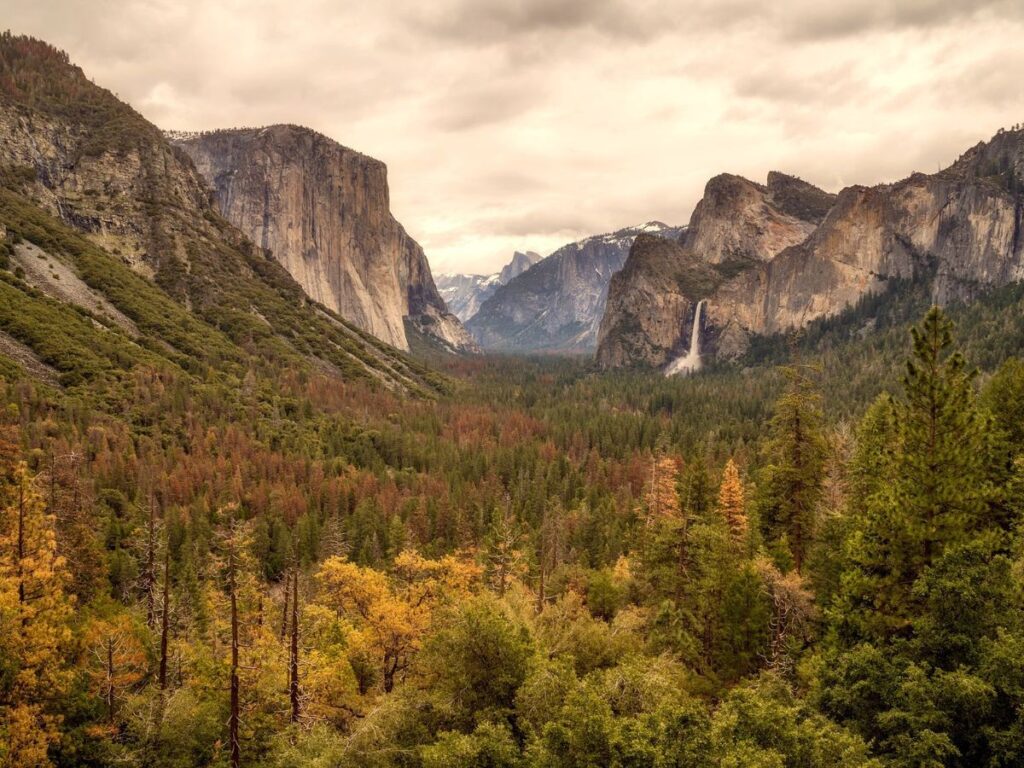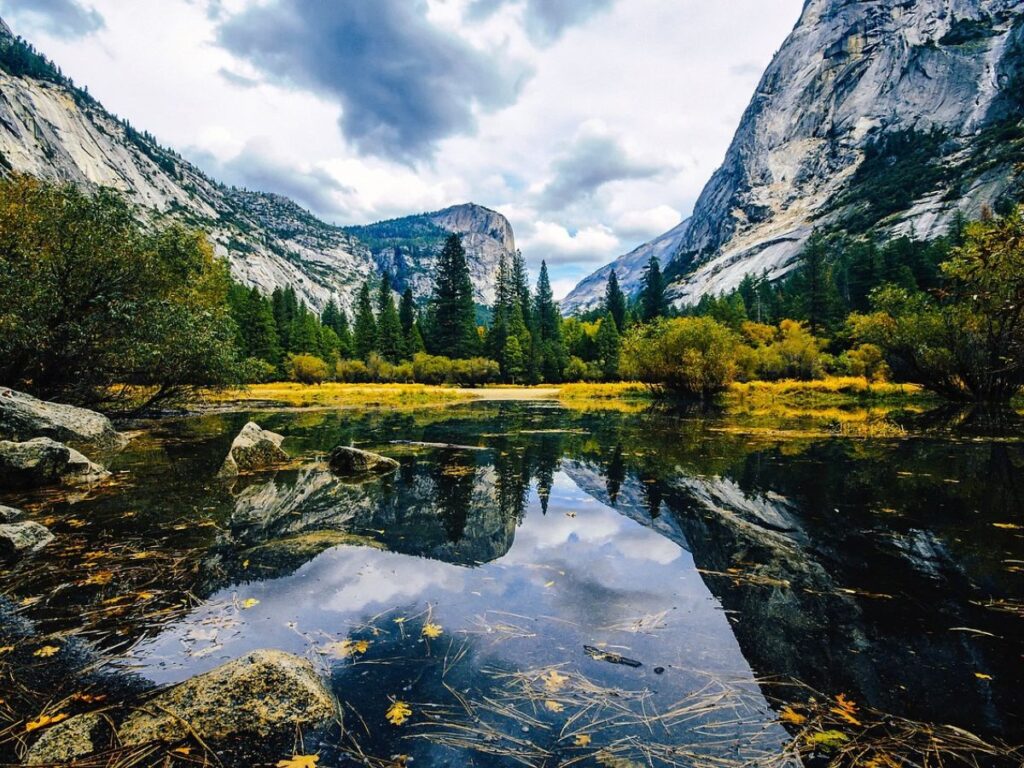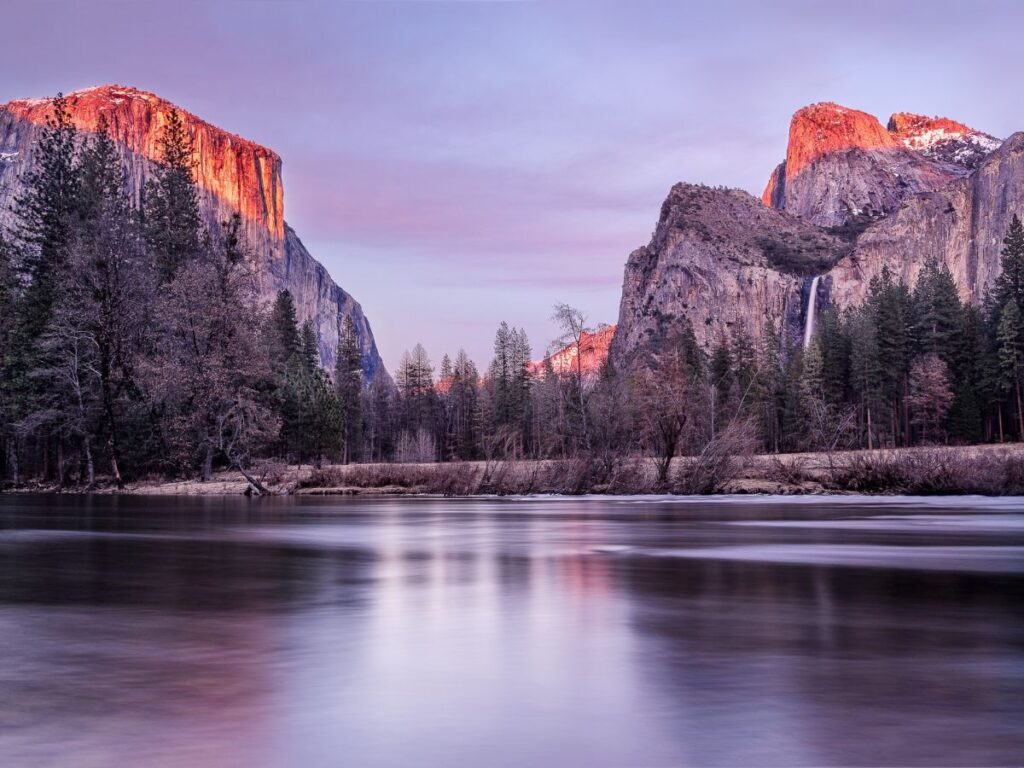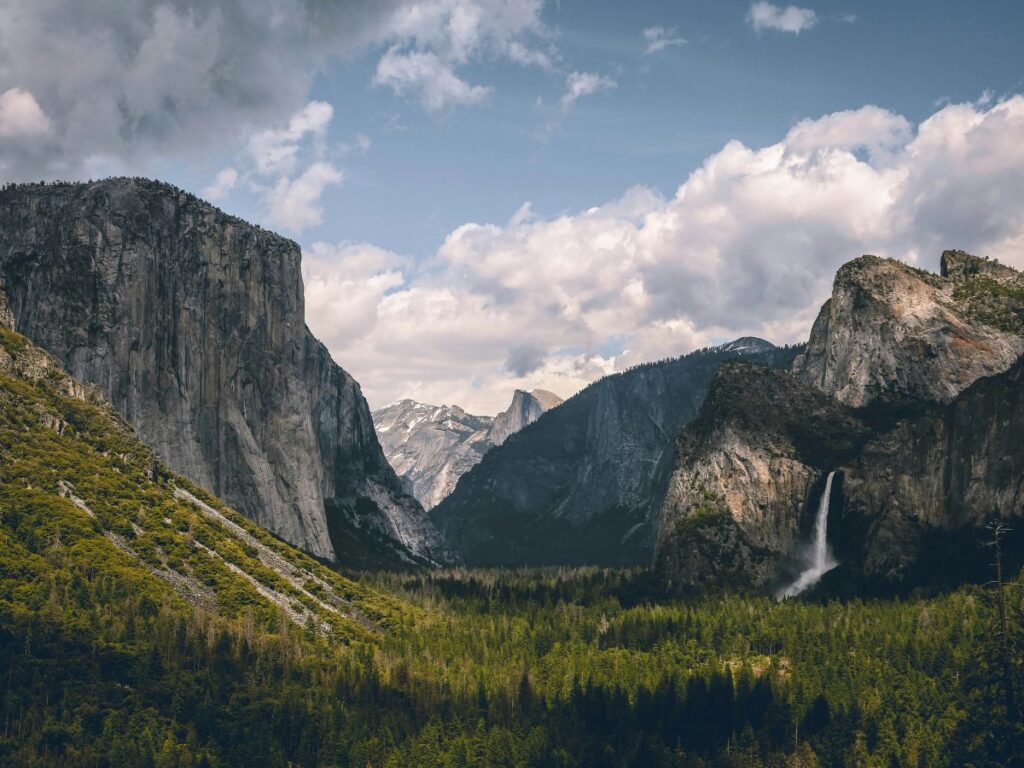Yosemite National Park, nestled within the Sierra Nevada mountains of California, spans over 1,187 square miles of breathtaking landscapes, ranging from deep valleys to towering peaks. Home to iconic granite cliffs, giant sequoias, and thundering waterfalls, it stands as a testament to the sublime power of nature. For travelers and adventurers aiming to explore this majestic park, understanding its elevations is not just a matter of scenic viewpoints but also an essential component for planning a safe and enjoyable trip. Altitude can have notable impacts on health, weather conditions, and the kind of activities one can undertake. As such, familiarizing oneself with the park’s varying elevations can significantly enrich the overall Yosemite experience.
Elevation Ranges at Yosemite
The diverse landscape of Yosemite National Park boasts a variety of elevations, each offering its unique experience, challenges, and wonders. Yosemite’s elevation spans a vast range, starting from the lower valleys and ascending to the towering High Sierra peaks. This change in height means visitors will encounter a variety of ecosystems, weather patterns, and terrains as they move across the park.
The lowest point in the park: Yosemite’s lowest elevation can be found at the park’s entrance near El Portal, measuring approximately 2,000 feet (610 meters).
The highest point in the park: The park’s pinnacle of elevation is Mount Lyell, the tallest peak in Yosemite, rising to an impressive 13,114 feet (3,997 meters). Scaling such heights requires preparation, not just in terms of equipment but also ensuring one’s body is acclimatized to the thinner air found at these lofty altitudes.
The diverse elevation ranges in Yosemite offer visitors the opportunity to experience the beauty of the Sierra Nevada mountains in all its facets, from the lush valley floors to the snow-capped peaks. Whether you’re a casual visitor or a seasoned hiker, understanding these elevations will ensure a more informed and enjoyable visit.

Areas of Yosemite by Elevation
Yosemite National Park’s vast expanse encompasses a diverse range of elevations, each offering unique experiences. Dividing the park by elevation can help visitors understand what they can expect to encounter, from the ecosystems and weather to activities and points of interest.
Lower Elevation Areas
Yosemite Valley
The heart of Yosemite, this glacial valley is situated in the western Sierra Nevada mountains.
Elevation: Approximately 4,000 feet.
Main Attractions: Iconic sites like El Capitan, Half Dome, and Bridalveil Fall, along with museums and visitor centers.
Preparation: At this elevation, visitors usually face milder conditions, but it’s always advised to check weather forecasts, especially in winter and spring when flooding can occur.
Wawona
Located in the southern part of Yosemite, Wawona is rich in history.
Elevation: Approximately 4,000 to 6,000 feet.
Main Attractions: The historic Wawona Hotel, Pioneer Yosemite History Center, and the nearby Mariposa Grove of Giant Sequoias.
Preparation: Similar to Yosemite Valley in terms of elevation, but visitors should still be mindful of weather conditions, especially if venturing into the nearby sequoia groves.
Merced River Canyon
Lies just outside the park’s main boundary to the west.
Elevation: Approximately 2,000 to 4,000 feet.
Main Attractions: Popular for white-water rafting and fishing. Offers a warmer and drier climate.
Preparation: While generally warmer, it’s essential to prepare for water activities and always have adequate sun protection.
Mid-Elevation Areas
Tuolumne Meadows
A vast, open subalpine meadow in the eastern section of Yosemite.
Elevation: Around 8,600 feet.
Main Attractions: Lembert Dome, the Tuolumne River, and numerous hiking trails.
Preparation: Given the altitude, it can be cooler even in summer. It’s crucial to dress in layers and be prepared for rapidly changing weather conditions, especially if planning hikes or overnight stays.
Glacier Point
A viewpoint above Yosemite Valley, offering panoramic views.
Elevation: About 7,214 feet.
Main Attractions: Unparalleled views of Yosemite Valley, Half Dome, and Yosemite’s high country.
Preparation: The road to Glacier Point is seasonal due to snow. When planning a visit, always check road conditions and bring warm clothing even in summer.
High-Elevation Areas
Mount Lyell
The highest point in Yosemite, located in the southeastern region of the park.
Elevation: 13,114 feet.
Notable Peaks: As Yosemite’s highest point, Mount Lyell itself is significant. The nearby peaks include Mount Maclure.
Preparation: High elevations bring thin air, potential for altitude sickness, and unpredictable weather. It’s vital to acclimatize, have appropriate hiking/climbing gear, and always inform someone of your plans.
Mount Dana
Situated on Yosemite’s eastern boundary, it offers spectacular views of Mono Lake.
Elevation: 13,057 feet.
Notable Peaks: Being one of Yosemite’s highest peaks, Mount Dana stands out, with nearby peaks like Mount Gibbs.
Preparation: As with all high-altitude areas, preparations should include acclimatization, suitable equipment, and safety precautions.

Effects of Elevation on the Human Body
As you ascend to higher elevations, the air becomes thinner, meaning there’s less oxygen available. This shift in atmospheric conditions can have pronounced effects on the human body.
Altitude Sickness
Altitude sickness, also known as acute mountain sickness (AMS), is the body’s response to decreased levels of oxygen at high altitudes.
Symptoms: These can range from mild to severe and include headache, dizziness, shortness of breath, nausea, fatigue, and difficulty sleeping. In more serious cases, it can escalate to High Altitude Cerebral Edema (HACE) or High Altitude Pulmonary Edema (HAPE), both of which require immediate medical attention.
Importance of Acclimatization
Gradually adapting to the decreased oxygen levels is crucial. Instead of immediately ascending to great heights, take it slow, allowing your body to adjust to the changing conditions. This process reduces the risk of altitude sickness.
Tips for Avoiding Altitude Sickness
- Ascend Slowly. If hiking or climbing, don’t rush your ascent. Give your body time to adjust.
- Drink plenty of water to keep dehydration at bay, which can exacerbate symptoms.
- Limit Alcohol and Caffeine as they can dehydrate you and worsen the symptoms of altitude sickness.
- Eat Carbs as they are easier to metabolize at high altitudes.
- Recognizing the early signs of altitude sickness can help you address it promptly.
- If symptoms persist or worsen, it’s essential to descend to a lower altitude and seek medical attention if needed.
How Elevation Impacts Your Experience
The changing elevations in areas like Yosemite can drastically affect various aspects of your experience, from the activities you undertake to the flora and fauna you encounter.

Weather Differences at Various Elevations
At higher elevations, temperatures tend to drop, making it cooler than the valleys and lower elevations. Snowfall is more common, and weather patterns can be more unpredictable. On the other hand, valleys and lower regions often experience warmer temperatures and can be more susceptible to conditions like flooding.
Physical Exertion and Health
The thin air at high elevations means your body has to work harder, even during normal activities. Breathing becomes more laborious, and tasks like hiking or climbing can be more strenuous. It’s crucial to listen to your body and know your limits.
Implications on Flora and Fauna
Different elevations support different ecosystems. In lower elevations, you might encounter dense forests with giant sequoias and a variety of wildlife. As you ascend, you’ll find subalpine and alpine ecosystems, with unique plant life adapted to the cooler, harsher conditions. Wildlife also varies, with certain species adapted to thrive at specific elevations.
Understanding the implications of elevation not only ensures safety and well-being but also enriches the experience, offering a deeper appreciation of the environment and the adaptability of life within it.
Activities at Different Elevations
Yosemite National Park’s varied elevations offer a plethora of activities catering to different fitness levels, preferences, and seasons. To ensure a memorable and safe experience, it’s essential to choose activities suited to the elevation and your capabilities.
Low-Elevation Activities
Low-elevation areas like Yosemite Valley offer numerous flat and short trails, making them perfect for families with children, seniors, or those looking for a relaxed experience.
Hiking Trails and Viewpoints
Yosemite Valley Loop Trail: An easy trail that provides stunning views of iconic landmarks such as El Capitan, Half Dome, and Bridalveil Fall.
Bridalveil Fall Trail: A short hike suitable for all ages, leading to the base of the mesmerizing Bridalveil Fall.
Mid-Elevation Activities
While some trails are accessible year-round, others might be closed or difficult during winter months due to snow. Always check trail conditions and seasonal availability beforehand.
Intermediate Hiking and Camping Options
Glacier Point: Offering a panoramic view of the Yosemite Valley, this trail is a bit more challenging but rewards hikers with unmatched vistas.
Tuolumne Meadows: A pristine subalpine meadow providing opportunities for longer hikes and backcountry camping.
High-Elevation Activities
Advanced Hiking and Climbing
Mount Dana: A challenging trail leading to Yosemite’s second-highest peak, offering breathtaking views and encounters with unique alpine vegetation.
Mount Lyell: Yosemite’s highest point, this trail is for the seasoned hiker or climber and provides unparalleled high Sierra vistas.
Other Activities like Stargazing: High-elevation areas, with their thinner atmosphere and reduced light pollution, are perfect for stargazing. Places like Mount Dana provide crystal-clear views of the night sky, making them a haven for astronomy enthusiasts.

Preparing for Different Elevations
Whether you’re an avid hiker or a casual visitor, understanding how to prepare for Yosemite’s diverse elevations is essential. Ensuring you’re physically ready, equipped with the right gear, and aware of safety measures can make your trip enjoyable and secure.
Physical Preparation
- Take It Slow. Don’t rush your ascent to higher altitudes. Spend a day or two at a moderate elevation before moving higher.
- Sleep Low. It’s often recommended to hike high during the day and come back to a lower elevation for sleeping.
- If you start to feel any symptoms of altitude sickness, consider staying at your current elevation or descending until you feel better.
- As you ascend, the air becomes drier, and you might not feel as thirsty. Staying hydrated is crucial to combat altitude sickness and maintain energy levels. Always carry enough water and drink regularly, even if you’re not feeling particularly thirsty.
Gear and Equipment
- Portable oxygen canisters can be helpful in providing relief from altitude symptoms.
- Higher altitudes have stronger UV radiation, so sunscreen, sunglasses, and a hat are must-haves.
- GPS, compass, and maps can be essential, especially in unfamiliar terrains.
Recommended Clothing Layers
- Moisture-wicking material to keep sweat away from the skin.
- Wool or fleece to retain body heat.
- Waterproof and windproof jacket to protect against harsh weather.
- Hat and Gloves are essential in colder conditions at higher elevations.
First Aid Essentials for Dealing with Elevation-Related Issues
- Aspirin or ibuprofen can help with mild symptoms.
- Diamox (Acetazolamide) is a prescription medication that can assist with acclimatization.
- Rehydration Salts to combat dehydration.
- Portable Oxygen for immediate relief in severe cases.

Key Takeaways
- Yosemite National Park offers a diverse range of elevations, each presenting unique experiences and challenges.
- Understanding and preparing for the different elevations – physically, mentally, and equipment-wise – ensures a safe and enjoyable experience.
- Whether you’re a casual visitor or an experienced hiker, there are activities suitable for every fitness level, from low-elevation family-friendly trails to advanced high-elevation hikes.
- Ascending to higher altitudes can have significant effects on the human body, with risks like altitude sickness. Acclimatization and staying hydrated are crucial.
- The elevation also affects the biodiversity of the park, with different flora and fauna prevalent at varying heights.
- Depending on the elevation, some trails and activities may only be available seasonally, especially those at mid and high elevations due to snowfall.
- Always prioritize safety, be aware of the symptoms of altitude sickness, and ensure you have the right gear and knowledge before embarking on any activity in the park.
FAQs
- What activities are best for families in Yosemite?
Low-elevation areas offer family-friendly trails like the Yosemite Valley Loop and Bridalveil Fall Trail.
- How does elevation affect weather in Yosemite?
Higher elevations tend to be cooler and may have snow, while lower areas are generally warmer.
- Is stargazing better at high elevations?
Yes, thinner atmosphere and reduced light pollution at high elevations offer clearer views of the night sky.
- How can I prepare my body for high altitudes?
Acclimatize by ascending slowly, stay hydrated, and be aware of altitude sickness symptoms.
- Is snow a concern at mid-elevation areas?
Yes, some mid-elevation trails might be closed or difficult during winter due to snow.
- Is there a risk of dehydration at higher elevations?
Yes, the air is drier, so it’s crucial to drink water regularly even if not feeling thirsty.
- Are pets allowed on Yosemite trails?
Pets are allowed on some trails but not all, especially backcountry ones. Always check beforehand.
- Do I need a permit for backcountry camping?
Yes, a wilderness permit is required for all overnight trips into Yosemite’s backcountry.
- What’s the best time to visit high-elevation areas in Yosemite?
Late spring to early fall, as snow can block trails and roads in winter.
- Are there any water sources on high-elevation trails?
Some trails may pass by streams or lakes, but always carry enough water and purifying tablets or filters.
